This website uses cookies as well as similar tools and technologies to understand visitors’ experiences. By continuing to use this website, you consent to Columbia University’s usage of cookies and similar technologies, in accordance with the Columbia University Website Cookie Notice.
Energy Explained
Insights from the Center on Global Energy Policy
Quantify to Rectify: Toward Equity in Vehicle-Grid Integration
This Energy Explained post represents the research and views of the author. It does not necessarily represent the views of the Center on Global Energy Policy. The piece may be subject to further revision. Contributions to SIPA for the benefit of CGEP are general use gifts, which gives the Center discretion in how it allocates these funds. Rare cases of sponsored projects are clearly indicated.
For a full list of financial supporters of the Center on Global Energy Policy at Columbia University SIPA, please visit our website at Our Partners. See below a list of members that are currently in CGEP’s Visionary Circle. This list is updated periodically.
Vehicle-grid integration (VGI) refers to the use of smart technologies to coordinate the charging operations of electric vehicles (EVs) to avoid negative impacts on the electric grid associated with additional electricity demand from EV charging. VGI can also help bring a smoother transition of the power sector toward net zero by leveraging EV batteries as distributed storage assets. Finally, VGI can enable cost savings to drivers and fleets. At the same time, there is a risk that VGI might exacerbate the divide between well-off early EV adopters and lower-income communities. Redressing this imbalance is particularly important because such communities have historically already shouldered a larger transportation cost burden and have been disproportionately affected by the negative externalities of transportation.
In this article, the authors explain why—despite government incentives—disadvantaged socioeconomic groups are excluded from VGI’s direct cost savings and other benefits. They go on to discuss the critical need for researchers and analysts to model the distributional impacts of VGI on different socioeconomic groups to help inform policies for advancing energy and transport justice.
VGI’s Value Proposition for the Grid, Fleets, and Drivers
VGI technologies have been developed to overcome major grid impacts from EV deployment by exploiting the load flexibility and storage potential of EV batteries when EVs are parked. In particular, “smart charging” refers to systems that control EV charging in response to price signals and other information about the state of the grid. The term “vehicle-to-grid” (V2G) is used when both charger and EV have bidirectional capabilities and control systems, allowing them not only to import electricity from the grid but also to export (i.e., sell) it back. Often “V2G” is also used more generally to indicate any situation in which electricity is not only exported to the grid but used to partially cover electricity demand from specific local sources such as a home or a building.[1]
V2G and smart charging could offer whole systems benefits to power systems, e.g., mitigation of the reinforcement cost of power systems infrastructure, reduction of the cost and carbon footprint of keeping electricity demand and supply always in balance, and easier integration of renewable energy sources.[2] At the same time, V2G and smart charging can provide multiple benefits to EV drivers and fleets. These include revenue generation, charging cost reductions, home energy cost reductions, reduction of personal carbon footprint, resilience during power outages, minimization of peak import capacity requirements at fleet depots, reduced battery degradation, and the symbolic value attached to contribution to societal benefits.[3]
Will VGI’s Value Be Accessible to Some Drivers Only?
The International Energy Agency has described the rapid and continuous transition of road transportation toward EVs as a “bright spot of the clean energy transition.”[4] This success will come down to policies that include purchase incentives (e.g., grants, tax credits, or rebates) and recurrent incentives (e.g., toll waivers and parking discounts), as well as fuel economy and pollutant standards, zero-emission vehicle mandates, taxation regimes, and bans on internal combustion engines.[5]
However, by and large, the transition kickstarted by these policies has not been an equitable one, as mostly high-income early adopters have benefitted from EV adoption incentives. A survey of California EV adopters between 2012 and 2017, for example, showed that 95 percent of EV adopters belong to high- or mid-high-income households.[6] In Europe, a 2022 study on EV ownership in Ireland demonstrated a correlation between affluent areas and EV ownership.[7] EVs symbolize luxury in geographical contexts as different as China and the Nordic regions in Europe.[8] The uptake of EVs mostly among higher-income households shows that demand-side policies for EV adoption have benefited mostly the well off.[9]
Purchase incentives, often not accessible to or insufficient for lower-income families, are sometimes mirrored by stick approaches punishing the use of internal combustion (IC) cars (e.g., zero-emissions zones). As a result, the experiences of high- and low-income groups can be very different. Higher-income groups are able to tap both on purchase incentives and reduced operational costs of EVs compared to IC vehicles. Conversely, lower-income groups that are unable to afford expensive EVs are likely to be further penalized for using polluting vehicles when options to use other transportation modes are unavailable.
Even when low-income consumers might be able to access EVs, there are no clear pathways for them to exploit their EVs as VGI assets, unlike homeowners with the ability to install chargers at their homes. Consider, for example, V2G-enabled energy arbitrage—charging an EV when the price of electricity is low and selling it back to the grid when the price is high. A recent UK study has shown that this could reduce by 28–67 percent the average price paid for charging by EV owners who own a bidirectional charger under wholesale-following time of day tariffs, compared to drivers subject to a flat tariff.[10] However, such price reductions can only benefit those who not only own an EV but also have access to home charging—typically wealthier consumers with garages or driveways where they park their cars at home.
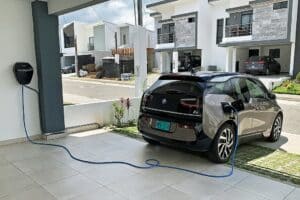
Home charging station. Photo by Mario Roberto Durán Ortiz via Wikimedia Commons.
In principle, some cost reductions could be attained by EV drivers without access to home charging if shares of the cost reduction from smart charging at the workplace or public charging facilities are passed onto customers.[11] However, most smart charging and V2G demonstrators’ projects have focused on residential customers and fleets with charging facilities at their premises.[12] Business models for VGI at public charging stations or at the workplace require more research and development, as the benefit sharing between stakeholders is less straightforward.
Moreover, as the direct economic benefits to drivers from VGI come from the energy arbitrage described above and are attained under time-dependent electricity prices, groups with more flexible activity-travel patterns, typically high-income earners, are likely to have more opportunities to choose when and where to charge. In contrast, socially disadvantaged groups, with less flexibility, may get locked into more costly charging arrangements.
Quantify to Rectify
The clean energy transition in road transport is in full swing thanks to government stimuli that have so far given greater benefits to wealthier drivers. It is critical to redress this initial imbalance as well as address the risk of VGI further exacerbating the inequality. Governments are adjusting their strategies, as exemplified by the US National Blueprint for Transportation Decarbonization, which puts equity and access among the guiding principles for the clean energy transition.[13] Building out the evidence base could help translate these guiding principles into policy and practice, and may require addressing some specific questions, including:
- Under a status-quo scenario, i.e., if current mobility and parking patterns remain unchanged, and all conventional cars are replaced with EVs, how will costs and benefits from smart charging and V2G be distributed in society? Will existing patterns of transport and fuel poverty be reinforced or reversed? Will new inequalities emerge? How will changes in energy prices and cost-of-living crises affect energy and transport justice outcomes in a fully electrified transport future?
- Under alternative EV adoption and charging infrastructure deployment scenarios, which relax the assumptions of a status-quo scenario, how will distribution of benefits change over time? Specifically, will higher-income early adopters bear the initial transition costs, leading disadvantaged groups to benefit from lower pricing incentives? Or will initial policy and financial incentives mean subsidies for high-income early adopters, suggesting reinforcement of existing disparities? Will late adopters face fuel and travel poverty due to potential increases in conventional fuel prices? How would additional policies for decarbonization of mobility, including promotion of low-carbon methods of travel modes, play out?
Quantitative approaches can help address such questions. While the energy justice literature has discussed the potential social implications of VGI, it has also singled out “social justice concerns” as a “notable gap” in VGI research.[14] Current research, rooted in the transportation planning and energy planning disciplines, has focused on quantitative analyses of purely techno-economic aspects. In fact, the lack of agreed-upon quantitative metrics for equity impacts may hinder wider application of energy and transport justice analyses. On the other hand, development of quantitative metrics may be criticized for being reductionist and ignoring complex multidimensional interactions. A more effective integration between quantitative engineering approaches and qualitative approaches dominating the energy justice literature may help to devise quantitative metrics that address core energy and transport justice issues associated with transportation electrification and VGI.
CGEP’s Visionary Circle
Corporate Partnerships
Occidental Petroleum Corporation
Tellurian Inc
Foundations and Individual Donors
Anonymous
Anonymous
the bedari collective
Jay Bernstein
Breakthrough Energy LLC
Children’s Investment Fund Foundation (CIFF)
Arjun Murti
Ray Rothrock
Kimberly and Scott Sheffield
Notes
[1] The VGI literature also refers to these systems as “vehicle-to-home” (V2H) and “vehicle-to-building” (V2B).
[2] Marko Aunedi and Goran Strbac, “Whole-System Benefits of Vehicle-To-Grid Services from Electric Vehicle Fleets,” Fifteenth International Conference on Ecological Vehicles and Renewable Energies, 2020, https://ieeexplore.ieee.org/document/9243032.
[3] Cenex, “A Fresh Look at V2G Value Propositions,” 2020, https://www.cenex.co.uk/app/uploads/2020/06/Fresh-Look-at-V2G-Value-Propositions.pdf.
[4] International Energy Agency, “Transport,” https://www.iea.org/reports/transport.
[5] Scott Hardman et al., “Driving the Market for Plug-in Vehicles: Understanding Financial Purchase Incentives,” Plug-In Hybrid & Electric Vehicle Research Center, Institute of Transportation Studies, UC Davis, March 2018, https://ucdavis.app.box.com/v/purchase-incentives-guide.; Scott Hardman et al., “Driving the Market for Plug-in Vehicles: Understanding Reoccurring Incentives,” Plug-In Hybrid & Electric Vehicle Research Center, Institute of Transportation Studies, UC Davis, March 2018, https://ucdavis.app.box.com/v/reoccurring-incentives-guide; International Energy Agency, Global EV Outlook 2023, April 23, 2023, https://www.iea.org/reports/global-ev-outlook-2023.
[6] Jae Hyun Lee, Scott J. Hardman, and Gil Tal, “Who Is Buying Electric Vehicles in California? Characterising Early Adopter Heterogeneity and Forecasting Market Diffusion,” Energy Research & Social Science 55 (September 2019): 218–226, https://doi.org/10.1016/j.erss.2019.05.011.
[7] Brian Caulfield, Dylan Furszyfer, Agnieszka Stefaniec, and Aoife Foley, “Measuring the Equity Impacts of Government Subsidies for Electric Vehicles, Energy 248 (June 2022): 123588, https://doi.org/10.1016/j.energy.2022.123588.
[8] David Tyfield, Dennis Zuev, Ping Li, and John Urry, “Low Carbon Innovation in Chinese Urban Mobility: Prospects, Politics and Practices,” China Low Carbon Reports, November 2014, http://dx.doi.org/10.13140/RG.2.2.22865.48489; Lance Noel, Benjamin K. Sovacool, Johannes Kester, and Gerardo Zarazua de Rubens, “Conspicuous Diffusion: Theorizing how Status Drives Innovation in eCectric Mobility,” Environmental Innovation and Societal Transitions 31 (June 2019): 154–169, https://doi.org/10.1016/j.eist.2018.11.007.
[9] Tamara L. Sheldon, “Evaluating Electric Vehicle Policy Effectiveness and Equity,” Annual Review of Resource Economics 14 (October 2022), https://doi.org/10.1146/annurev-resource-111820-022834.
[10] James Dixon, Waqquas Bukhsh, Keith Bell, and Christian Brand, “Vehicle to Grid: Driver Plug-In Patterns, their Impact on the Cost and Carbon of Charging, and Implications for System Flexibility,” ETransportation 13 (August 2022): 100180, https://doi.org/10.1016/j.etran.2022.100180.
[11] Nathaniel Tucker and Mahnoosh Alizadeh, “Online Pricing Mechanisms for Electric Vehicle Management at Workplace Charging Facilities,” 2018 56th Annual Allerton Conference on Communication, Control, and Computing, 2018, 351–358, https://ieeexplore.ieee.org/document/8635950.
[12] Filipe Gonzalez Venegas, Marc Petit, and Yannick Perez, “Active Integration of Electric Vehicles into Distribution Grids: Barriers and Frameworks for Flexibility Services,” Renewable and Sustainable Energy Reviews 145 (July 2021): 111060, https://doi.org/10.1016/j.rser.2021.111060.
[13] US Department of Energy, “The US National Blueprint for Transportation Decarbonization,” https://www.energy.gov/sites/default/files/2023-01/the-us-national-blueprint-for-transportation-decarbonization.pdf.
[14] Benjamin Sovacool, Lance Noel, Jonn Axsen, and Willett Kempton, “The Neglected Social Dimensions to a Vehicle-to-Grid (V2G) Transition: A Critical and Systematic Review,” Environmental Research Letters 13 (January 2018): 013001, http://dx.doi.org/10.1088/1748-9326/aa9c6d.
More on Energy Explained Energy Explained
Utilities’ Low-Income Discount Programs Help Address Energy Insecurity, But Some US States Lag Behind
Almost 34 million American households were considered energy insecure in 2020, with the majority foregoing food or life-saving medicine at least once in order to pay their utility bills.

Engaging Consumers in Reducing Critical Mineral Intensity of E-Mobility: A Research Agenda
Electric vehicle (EV) batteries are a major source of critical mineral (CM) demand.
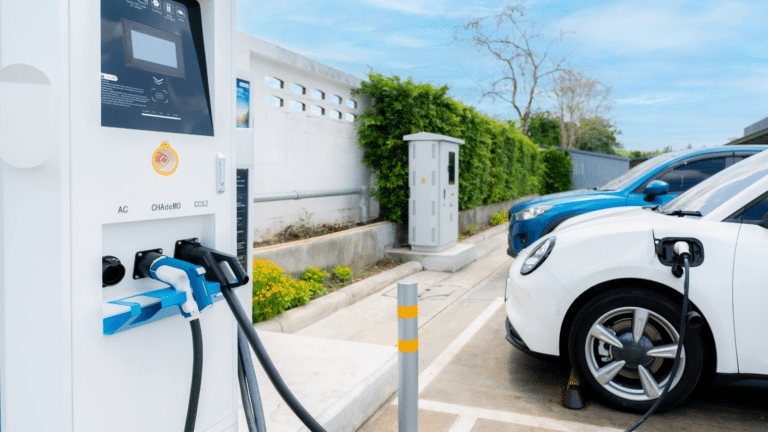
COP28: Focus on Energy Opportunity and Accessibility
At the annual round of international climate negotiations that are well underway at COP28 in Dubai—to limit global temperature rise to 1.5° Celsius—the needs of the developing world are front and center.
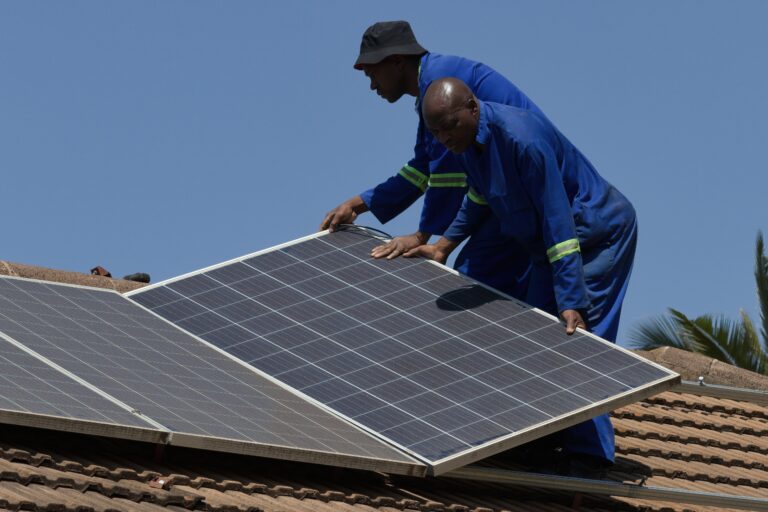
Focus on Fleets to Manage Critical Minerals Demand
The remarkable pace of road transportation electrification has rapidly become one of the lead drivers of demand for critical minerals.
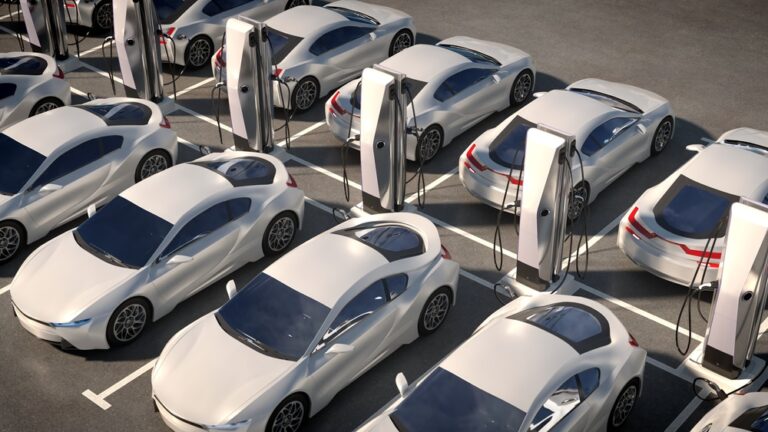
Relevant
Publications

China Hawks Are Putting the Green Transition at Risk
The Biden Administration's new foreign entity of concern rule on critical minerals excludes Chinese sources, posing challenges for the U.S. energy transition.
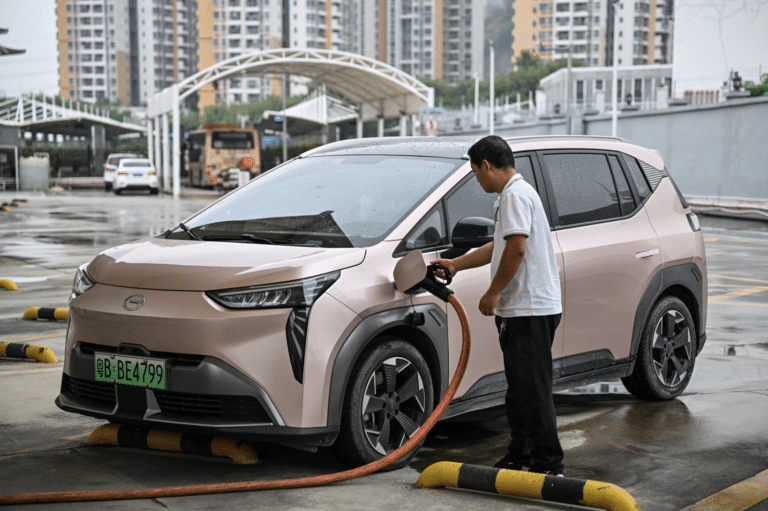
Columbia India Energy Dialogue: Event Report
On September 18, 2023, the India Program at the Center on Global Energy Policy at Columbia University SIPA held its flagship event, the Columbia India Energy Dialogue.


